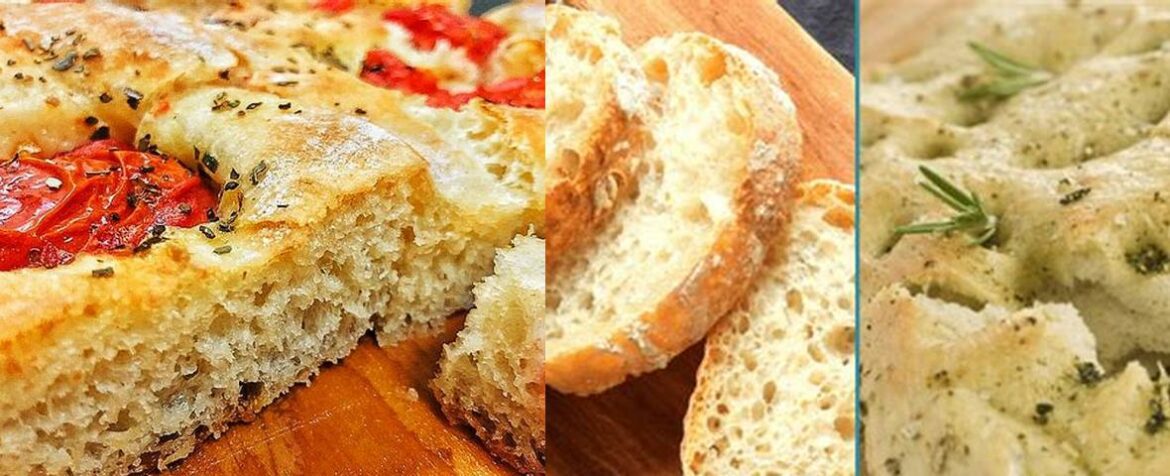Focaccia vs ciabatta: Are you ready to embark on a delicious journey through the world of Italian flatbreads? Get ready to sink your teeth into the age-old debate of Focaccia vs Ciabatta. These two beloved breads have captured the hearts (and taste buds) of food enthusiasts around the globe. Join us as we explore the contrasting characteristics, flavors, and textures of these delectable creations. Whether you’re a bread connoisseur or simply a lover of all things carbs, this blog post will satisfy your cravings and leave you with a newfound appreciation for the art of Italian baking. So grab a cup of coffee, sit back, and let’s dive into the mouthwatering world of Focaccia and Ciabatta!
Ciabatta Vs Focaccia: Exploring the Contrasts of Two Italian Flatbreads
Embark on a culinary expedition through the world of Italian flatbreads, where Ciabatta and Focaccia stand as distinctive creations with unique characteristics. Their differences lie not just in their appearance but also in their origins, ingredients, texture, and culinary applications. This comprehensive guide delves into the nuances of each bread, inviting you to savor the flavors and versatility they bring to the table.
Origins and Ingredients: A Tale of Two Breads
Ciabatta, hailing from Northern Italy, boasts a rustic charm with its elongated shape, resembling a slipper in Italian. Its rustic look is a testament to its humble beginnings in the 1980s. Made with wheat flour, water, yeast, salt, and olive oil, Ciabatta’s dough is mixed gently to preserve its open crumb structure, resulting in a light and airy texture with large air pockets.
Focaccia, on the other hand, traces its roots back to ancient Rome, where it was a staple food. Its name, derived from the Latin word “focus,” meaning hearth, hints at its traditional cooking method in wood-fired ovens. Prepared with wheat flour, water, yeast, salt, and olive oil, Focaccia dough is enriched with olive oil and undergoes a shorter fermentation period, giving it a denser, chewier texture and a crispy golden crust.
Texture and Appearance: A Contrast of Sensations
Ciabatta’s airy, light texture is a delight to the senses. Its soft crumb and slightly chewy crust create a harmonious balance, making it a versatile bread for various culinary creations. Focaccia, in contrast, presents a thicker, denser experience with a softer crust. Its toppings, often a medley of herbs, vegetables, or cheese, add a burst of flavor and visual appeal to this flatbread.
Flavor Profile: A Symphony of Tastes
Ciabatta possesses a mild, slightly tangy taste with a hint of sweetness. Its neutral flavor profile allows it to blend seamlessly with a wide range of ingredients, making it an ideal choice for sandwiches, soups, salads, and dipping. Focaccia, on the other hand, exudes a richer flavor infused with the aromatic herbs like rosemary, the fruity notes of olive oil, and the savory touch of sea salt. Its distinct flavor makes it a popular choice for bruschetta and as an appetizer.
Culinary Uses: A Journey Through Versatility
Ciabatta’s versatility shines through its ability to absorb flavors, making it a superb choice for sandwiches or as a side dish. Its elongated shape and sturdy texture make it perfect for slicing and layering with meats, cheeses, and vegetables. Focaccia, with its denser texture and toppings, can be enjoyed on its own as a snack or topped with various ingredients for a delightful appetizer or main course. Its versatility extends to pizza, where its dough-like texture provides a sturdy base for an array of toppings.
Regional Variations: A Tapestry of Culinary Traditions
Ciabatta and Focaccia, both hailing from Italy, reflect the diverse culinary traditions of their respective regions. Ciabatta, originating from Northern Italy, is often served with meat like prosciutto crudo or mortadella, showcasing the region’s love for cured meats. Focaccia, with its roots in Liguria in Northwestern Italy, is known for its softer, dough-like texture, making it an ideal base for pizza, a dish that has become synonymous with Italian cuisine.
Preparation and Enjoyment: A Culinary Adventure
Crafting Ciabatta and Focaccia at home is a rewarding experience that allows you to savor the flavors of these Italian flatbreads in their freshest form. Follow recipe instructions meticulously, paying attention to the proper measurements, mixing techniques, and baking times. Prepare the dough, shape it into the desired form, bake it to perfection, and allow it to cool to achieve the ideal texture. Experiment with various toppings, seasonings, and uses to fully appreciate the versatility of each bread in your culinary creations.
Conclusion: A Culinary Symphony of Contrasts
Ciabatta and Focaccia, two distinct Italian flatbreads, offer a symphony of contrasts that delight the senses. Their unique characteristics, ranging from origins and ingredients to texture, flavor, and culinary uses, make them versatile additions to any meal. As you explore the world of Italian flatbreads, let your taste buds guide you through a journey of flavors, textures, and culinary traditions that have stood the test of time.
FAQ about Focaccia Vs Ciabatta
Q: What are the main differences between Ciabatta and Focaccia?
A: Ciabatta and Focaccia differ in their origins, appearance, ingredients, texture, and culinary applications.
Q: Where does Ciabatta bread originate from?
A: Ciabatta bread originates from Northern Italy.
Q: How does Ciabatta bread differ in appearance from Focaccia?
A: Ciabatta bread has an elongated shape, resembling a slipper in Italian, while Focaccia is typically round or rectangular.
Q: What are the main ingredients used in making Ciabatta bread?
A: The main ingredients used in making Ciabatta bread are wheat flour, water, yeast, salt, and olive oil.
Q: How does the texture of Ciabatta bread differ from Focaccia?
A: Ciabatta bread has a light and airy texture with large air pockets, while Focaccia has a denser and more chewy texture.
Q: What are the culinary applications of Focaccia bread?
A: Focaccia bread is often used as a base for sandwiches, served as an appetizer or side dish, or topped with various ingredients such as herbs, cheese, or vegetables.


